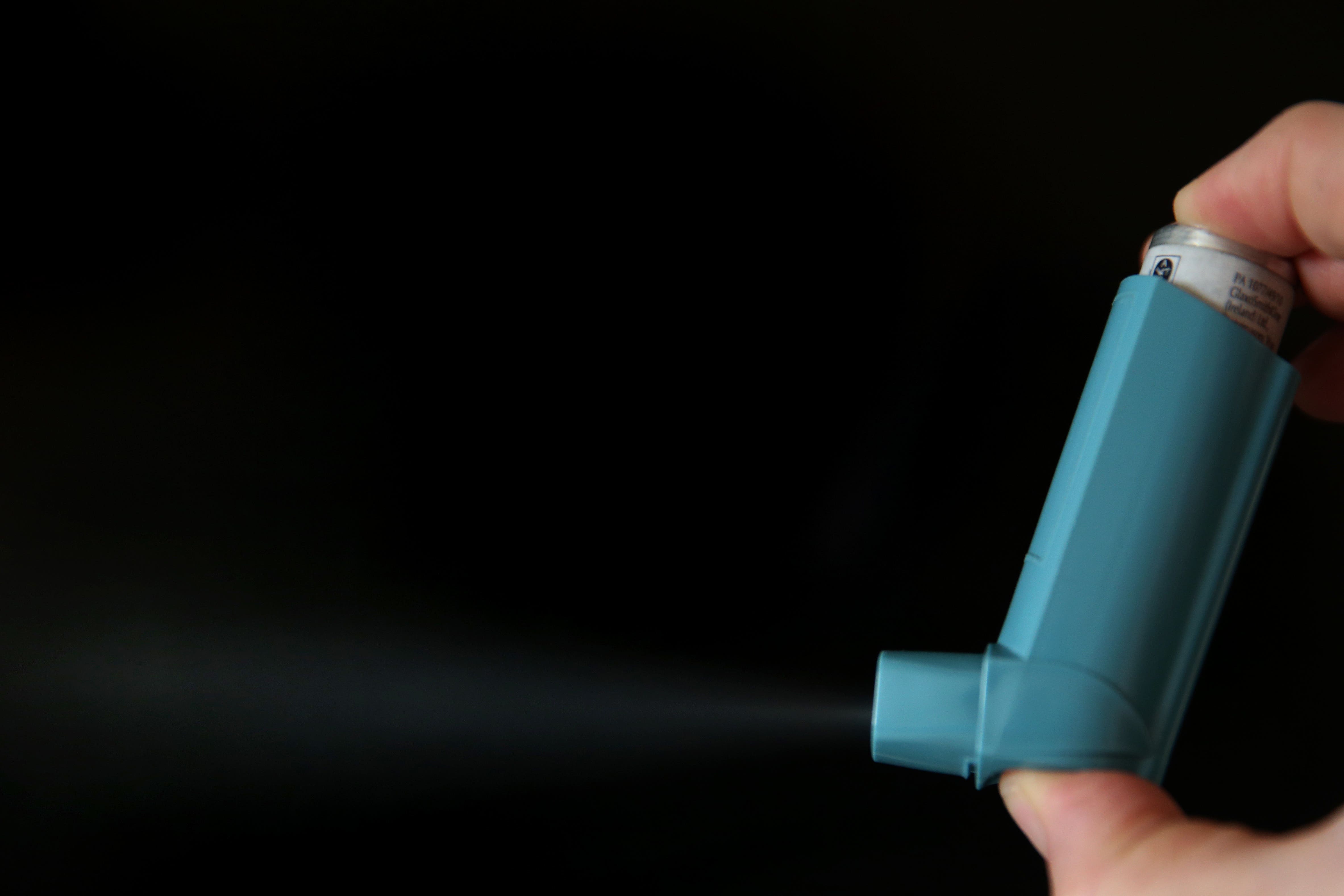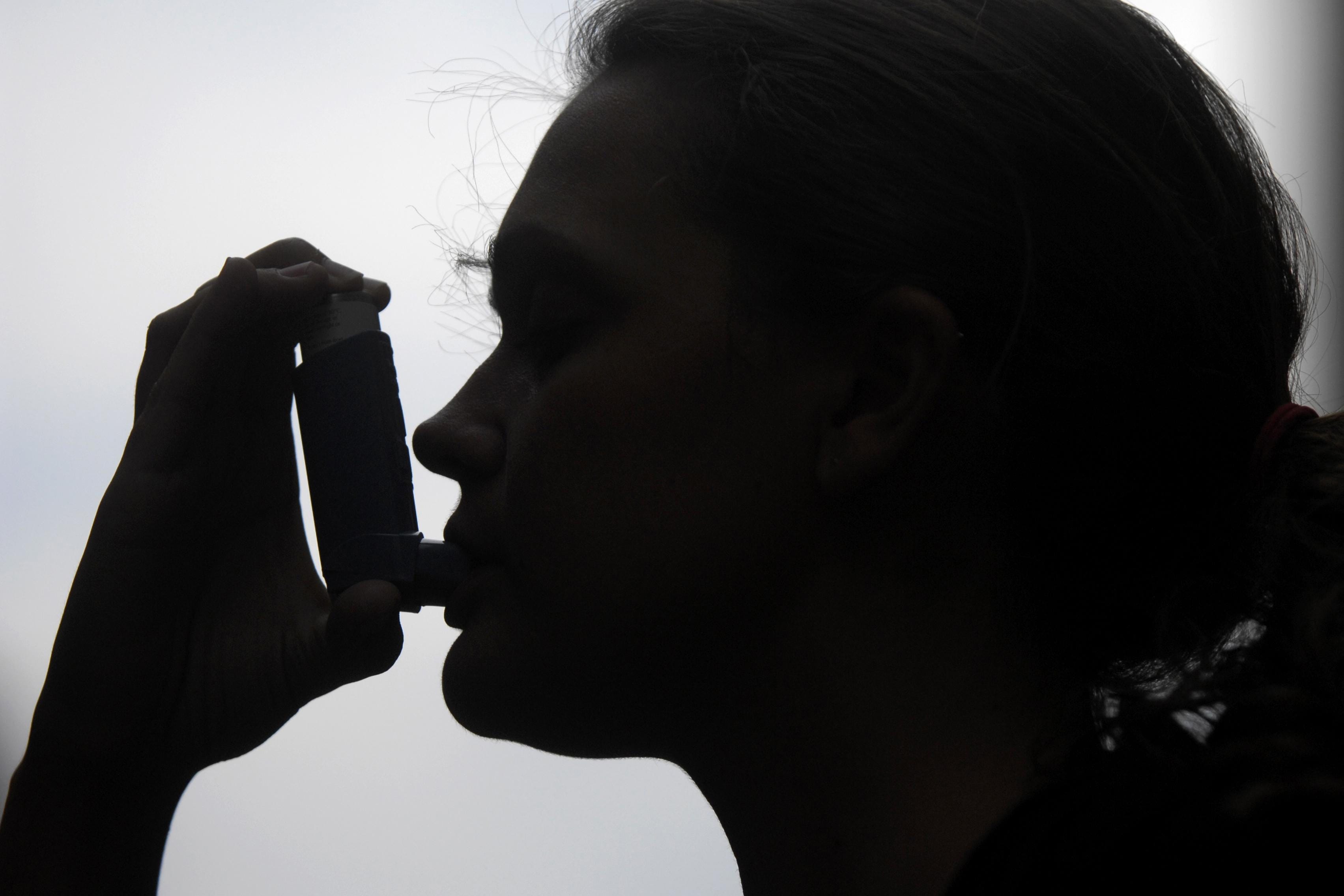Doctors urged to ditch blue inhalers for asthma treatment over climate concerns
New guidelines say ‘greenhouse gas effect’ of treatment compares to environmental impact of long car journey

The carbon footprint of blue inhalers is being compared to a lengthy car trip in advice released to asthma patients as British doctors are told to switch out the sprays for a more effective treatment.
In a “true pivot” in asthma care across the UK, new guidelines urge medics to offer inhalers that both relieve and prevent symptoms to newly diagnosed sufferers who are 12 and over, rather than the widely used, traditional inhalers that relieve symptoms only.
The joint guidelines for doctors, provided by the British Thoracic Society, National Institute for Health and Care Excellence (NICE), and the Scottish Intercollegiate Guidelines Network, have been issued alongside directions for patients that explain the environmental damage caused by the traditional inhalers.
“Most people with asthma have one or more preventer inhalers (which control your asthma) and a reliever or rescue inhaler (usually blue), which relieves symptoms,” the patient advice brochure published online said.
“Some types of inhalers contain a propellant (gas) to carry the medicine into the lungs. The propellant has a greenhouse gas effect, which contributes to climate change (global warming).”

The advice compared the carbon footprint of different types of inhalers, showing the carbon dioxide equivalent in kilograms between the various treatments and a journey of a motor vehicle fueled by petrol.
It said the Ventolin Evohaler brand of salbutamol, a common asthma reliever, contained more gas per puff than other salbutamol metered dose inhalers, comparing it to a 115-mile journey in a petrol car, as both contributed 35kg of carbon dioxide to the atmosphere.
“Flutiform and Symbicort metered dose inhalers contain a type of propellant that has a more powerful greenhouse effect than other metered dose inhalers that contain similar medicines. Dry powder inhalers do not contain propellant,” the advice said.
The advice said switching to dry powder inhalers will have a beneficial effect on climate change, however stressed that asthma sufferers should choose or stick with the treatment that worked best for them.
The new guidelines for doctors recommend against prescribing short-acting, blue reliever inhalers without the corticosteroids contained in preventative medication, saying patients should instead be offered a low-dose combination of corticosteroids and formoterol, which they said led to people suffering “fewer severe asthma attacks.”

The directions say simple respiratory tests should be used to diagnose asthma when people first show symptoms, before prescribing the newly recommended treatment.
British Thoracic Society chair Paul Walker said the changes would have an impact on asthma care across the UK.
“The treatment changes represent a true pivot in the principles of asthma care and will contribute to improved outcomes,” Dr Walker said.
Professor Jonathan Benger, chief medical officer and interim director of the Centre for Guidelines at NICE, said the updated guidelines would ease the pressure on the health service by reducing hospital admissions.
Health charity Asthma and Lung UK has previously warned about a million people with asthma were relying on reliever inhalers instead of preventers to manage their condition, increasing risk of serious illnes.
The charity’s chief executive, Sarah Woolnough, urged the National Institute for Health and Care Excellence in 2022 to update its guidelines so relievers were no longer prescribed without preventative treatments.
Join our commenting forum
Join thought-provoking conversations, follow other Independent readers and see their replies
Comments
Bookmark popover
Removed from bookmarks